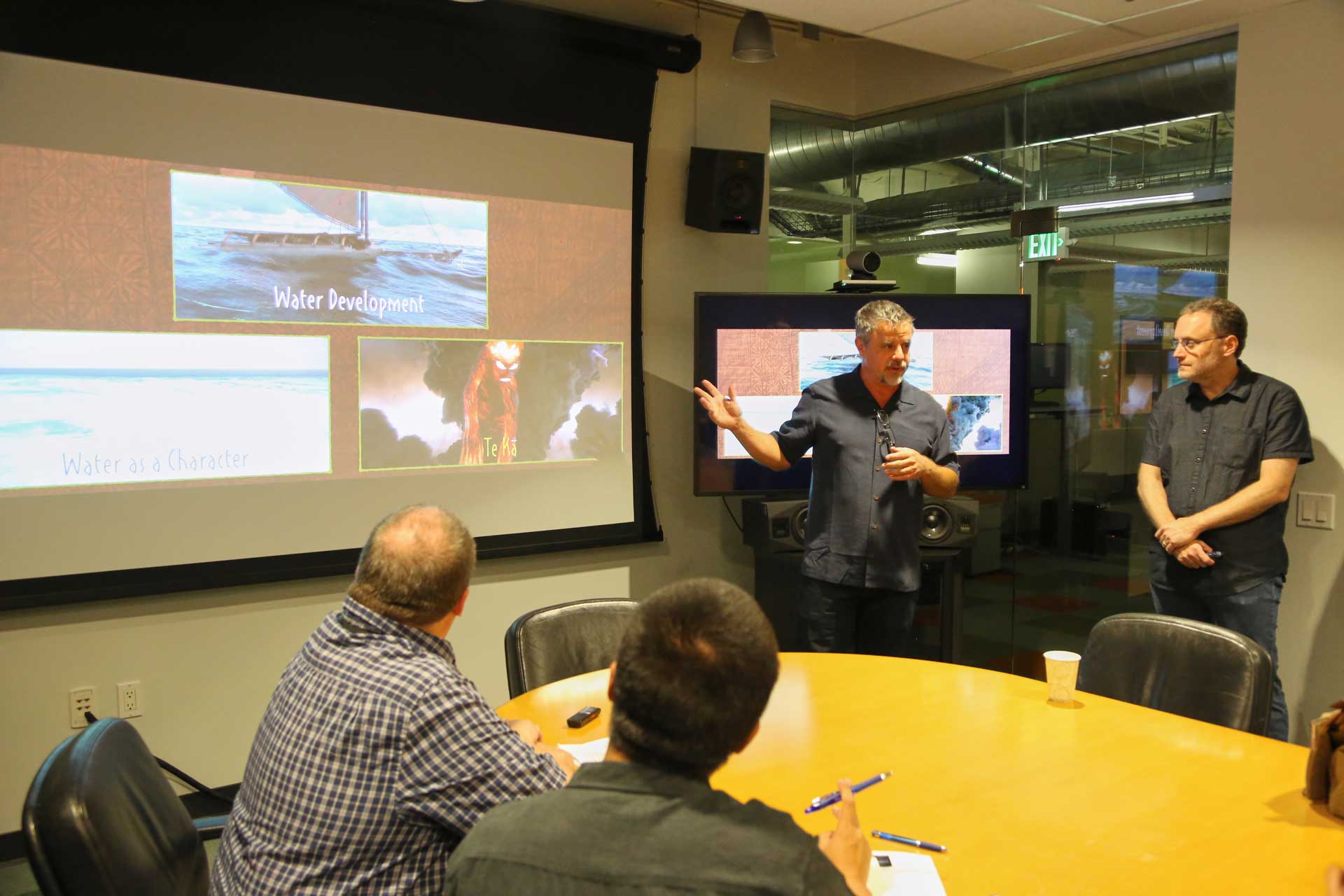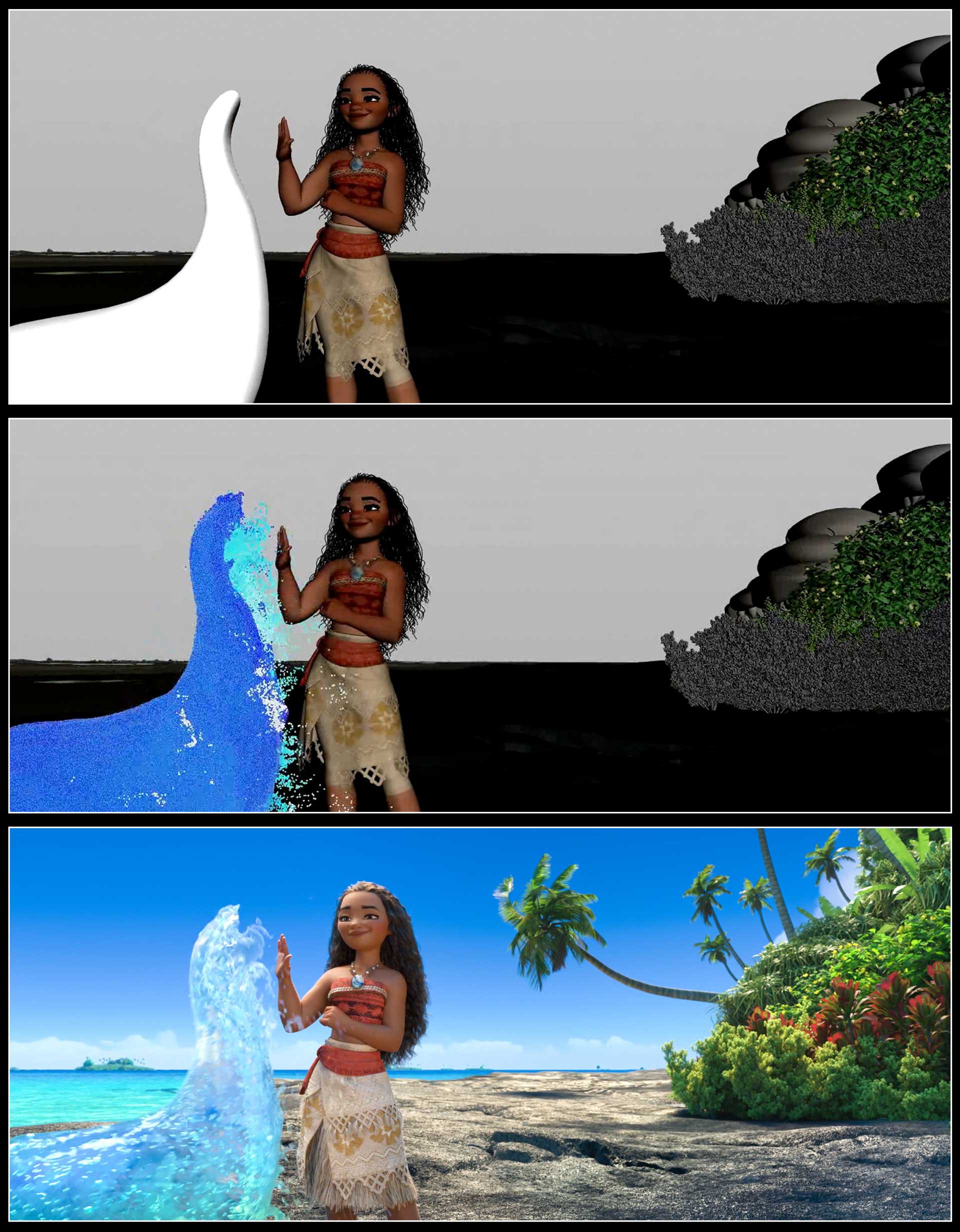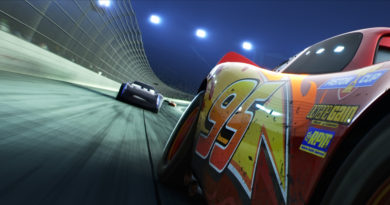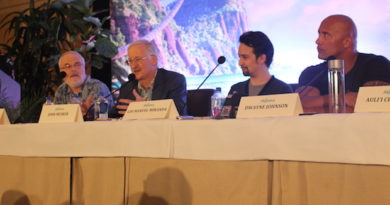Moana Preview – Water – A Technical & Visual Effects Challenge

Over the summer I had the opportunity to spend a day at the Walt Disney Animation Studios and learn more about the upcoming film Moana. Moana will open nationwide Thanksgiving weekend and is the story of a teenager who embarks on a journey to help her people. Along the way she discovers more about herself and her identity.
One of the aspects of the day that really interested me was learning more about the technical challenges and advancements made in the film. With each new animated feature technology continues to evolve which in turn fuels the creative imagination of the team and this leads to more requests to push further along.
If you have seen any of the trailers you quickly realize that water plays an integral role within “Moana”. It is the setting as well as a character so it is present in a vast majority of the shots. Combined with fire over 80% of the shots required special effects work. Compare this to Big Hero 6 where only 46% of the shots featured special effects. To accomplish this the team needed to develop new ways to manage water and make the environment work for the film crew as well as the audience. They created a new system to render and manage water. As they developed these systems they looked not only at how water is modeled but how we expect it to look. So sometimes perfect models do not translate to how our eyes “expect” to see a shot. Instead of photo realism they look at it from more of an artistic angle. Giving you an idealized look or vivid memory feel.
To achieve this they looked at how the shots were composed and would use combinations of techniques within a shot to achieve the desired look. For example an ocean sequence they may divide up the water based on its distance to the boat. So water in the general ocean around may be very formulaic in how it works, but as you get closer to boat it will follow a different set of simulation rules in how it moves, reacts to light, etc..

During our meeting with the effects team they mentioned their working relationships with other entities within the Walt Disney Company and how they reach out to their peers at Pixar and Industrial Light and Magic to learn about what they believe is “state of the art” and how they look at common challenges. They used some of this information and feedback to guide their new water systems. The three units continue to develop and maintain their systems independently though.
To achieve the complex rendering of the shots in “Moana” that consisted of billions of particles they used distributed computing power. They were using all the CPU time they could find. This even included rescuing old equipment that was being retired and plugging it in to get some extra computational power. As you walked around the studio there were computers plugged in all over the place providing some extra bandwidth as they raced toward their completion date for the film.


